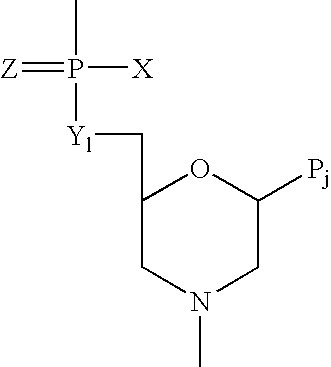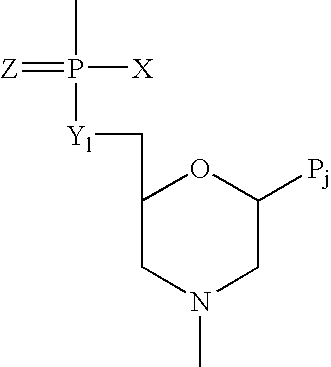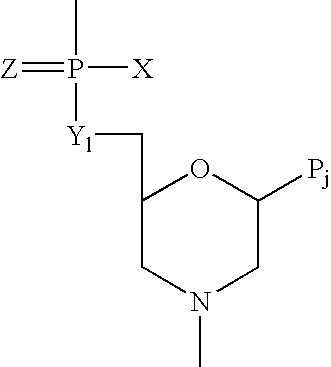Method and antisense compound for potentiating anti-cancer agents
- Summary
- Abstract
- Description
- Claims
- Application Information
AI Technical Summary
Benefits of technology
Problems solved by technology
Method used
Image
Examples
example 1
Cisplatin Resistance in DU145 Cells Correlated with XIAP Expression
[0184] Human androgen-independent DU145 cells were treated with various concentrations of cisplatin for 24 h. The data in FIG. 4A, reveal that these cells are highly resistant to cisplatin up to 72 h even at higher concentrations (200 μM). To determine whether the effect of cisplatin on DU145 cells is time-dependent, a time course study was carried out. A dramatic 60-70% decrease in cell viability (IC50=30 μM) was observed when the cells were incubated in the presence of cisplatin for 96 h (FIG. 4B). To provide a mechanistic insight into the effect of cisplatin on DU145 cell viability, we examined the expression of XIAP and caspases at various time points post-cisplatin treatment. No significant changes were observed in XIAP or active caspase-3 levels in lysates from cells treated up to 48 h with cisplatin. In contrast, a significant decrease in XIAP expression, and inactive forms of caspase-3 and -7 with a correspo...
example 2
TRAIL Activates Caspase-3 but Does Not Change XIAP Levels in DU145 Cells
[0185] TRAIL has been shown to induce programmed cell death through death receptors-DR4 and / or DR5 followed by activation of caspases, particularly caspase-3. Treatment of DU145 cells with TRAIL caused a rapid but partial sensitivity (50% cell death) with IC50=140 ng / mL. However, there was no shift in IC50 or decreased cell viability with increasing concentration or duration of TRAIL treatment (FIGS. 5A and 5B). Although TRAIL significantly increased the levels of active form of caspase-3 and decreased Akt levels within 6 h, no change in XIAP expression was observed even with prolonged incubation as shown in FIG. 5C.
example 3
XIAP Antisense PMO Decreases XIAP and AKT Expression and Induces Apoptosis in DU145 Human Prostate Cancer Cells
[0186] In order to examine the role of XIAP in the regulation of apoptosis, a 20 mer antisense PMO agent was generated targeting the translational start site of XIAP mRNA (SEQ ID NO:1). A plasmid-based screening system to screen antisense specificity and activity was generated by subcloning 29 bases of the 5′ untranslated region, AUG translational start-site and the first 16 bases of the protein coding sequence of XIAP gene followed by the luciferase reporter gene. Confluent HeLa cells were then transiently transfected with this plasmid construct. This experiment was conducted to confirm that antisense activity was specific to the XIAP antisense PMO sequence. The data in FIG. 6A revealed sequence-specific inhibition of luciferase activity since the antisense PMO produced a significant inhibitory effect compared to the scrambled control.
[0187] In addition, to study the eff...
PUM
| Property | Measurement | Unit |
|---|---|---|
| Temperature | aaaaa | aaaaa |
| Time | aaaaa | aaaaa |
| Time | aaaaa | aaaaa |
Abstract
Description
Claims
Application Information
 Login to View More
Login to View More - R&D
- Intellectual Property
- Life Sciences
- Materials
- Tech Scout
- Unparalleled Data Quality
- Higher Quality Content
- 60% Fewer Hallucinations
Browse by: Latest US Patents, China's latest patents, Technical Efficacy Thesaurus, Application Domain, Technology Topic, Popular Technical Reports.
© 2025 PatSnap. All rights reserved.Legal|Privacy policy|Modern Slavery Act Transparency Statement|Sitemap|About US| Contact US: help@patsnap.com



